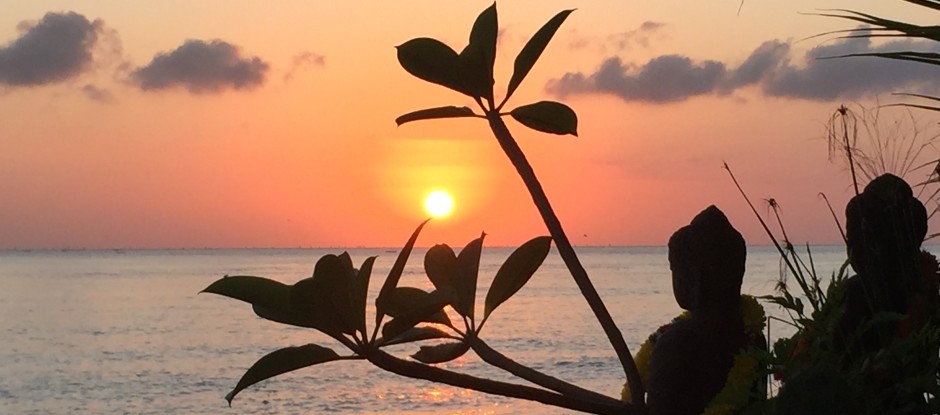This morning the group successfully traipsed to the top of the Ijen Crater, and three of us managed to get about 2/3 of the way down into the crater to witness the blue flame, or Api Biru…
This part of the trip is particularly special because 1) It’s Mt. Ijen – a well-known tourist destination and goal for many photographers. 2) Our group leader had to get some VERY special permissions for us to climb.
For more about Mt. Ijen itself (#1), see here:
https://en.wikipedia.org/wiki/Ijen
There are also LOTS of travel blogs about it, as well as tourism web pages to check out. It is a very well-traveled mountain.
So, in answer to #2 above, I’m not going to go into a lot of detail about it, other than to say that foreigners are not allowed to summit Mt. Ijen at this time (COVID). You can try to wrap your head around that fact/ rule/ policy a thousand different ways, and it doesn’t make any sense. But our group leader did a ton of negotiating and contacting of people who could help us with this journey, and was successful. We had to start our ascent at 2 am, so we were up at 12:30 and in the car by 1. This got us to “the front of the pack” of climbers.
There were people camping in the parking lot at the base of the mountain.

And as you can see the moon was almost full. It was a great night/ early morning for climbing!
I was surprised by the quality of the trail and the lack of difficulty. It’s a wide but steep trail; about a 2 hour/ 2.6 mile (4.2 kms) hike to the top of the rim of the crater. The texture of the trail is very flat and nicely compacted – not full of rocks or “rollie-polie” things – quite easy to walk on. Yes, it felt a bit long, but not as long as I expected it to feel. We took a pretty moderate pace and summited the crater without even knowing it.
THEN, as if we were kidnapped, our guides started directing Carolyn, Anita, and me down to the Api Biru – the sulphur pit near the lake where you can observe the “blue fire” that the mountain is so famous for. This was strange because we all thought that we would stop at the top of the crater and then decide whether to go down or not. Personally, I would have chosen NOT to go down. The trail was very steep, loose, full of boulders, big rocks, switchbacks, and otherwise hairy moments. Carolyn navigated alone, while Anita and I were both assisted by our guides. We had no idea why the guys in our group weren’t with us or what we were doing until about ten minutes into the downward climb. It finally dawned on us that we were going down, and then we just kept going. One of the guides said it would be 800 meters to the bottom where the blue flame is best observed – inside the sulphur mine. I would estimate that we stopped about 200 meters from the bottom. It’s at this point that you must wear a gas mask. We could smell the sulphur strongly and see the blue flames in the distance, but just barely.

Carolyn gave her phone/ camera to our guide for him to continue to the bottom to take a photo for us – none of us were game to go any further. Here’s “the money shot” the guide took down near the blue flame:
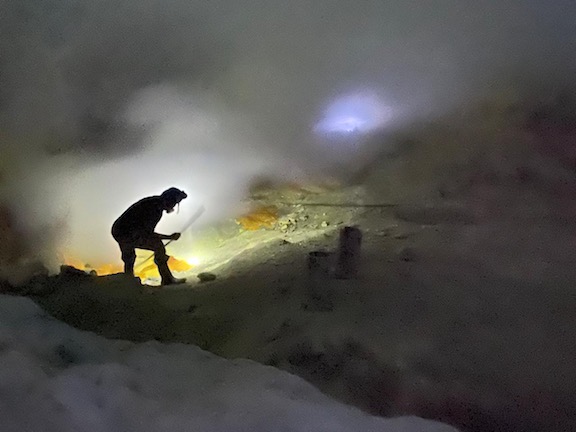
To say that the sulphur miners here have a horrible, rotten job is about as much of an understatement as you can make. While we were on the rough trail down to the lake, miners were on their way up with their baskets full of 40 kilos PLUS of sulphur rock – balanced on their shoulders, with no room for error.
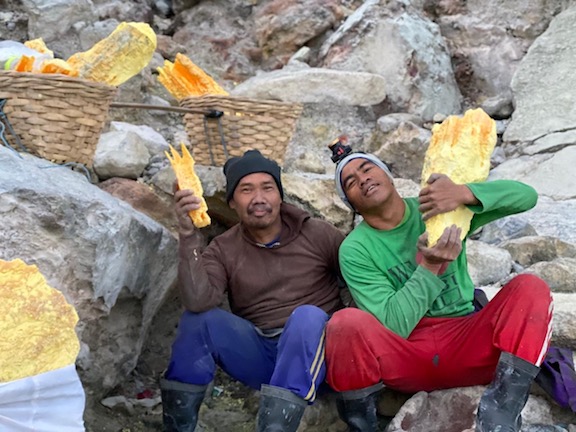
Carolyn got this amazing shot of two miners on the way up to the rim of the crater. You can see the baskets they haul in the upper left corner of the photo, and that they wear Wellies on their feet. Their balance and stamina is a feat to behold. A miner told David today that he receives about Rp100,000 for each load of sulphur he carries out of the mine – and he can make three trips per day. That’s about $6.78 USD per haul at the moment. So for this horrendously dangerous work, a miner can make a whopping $20 USD in a day.
We were in a bit of a hurry to get back up to the crater rim to see sunrise. The walk up this path was steep and difficult.
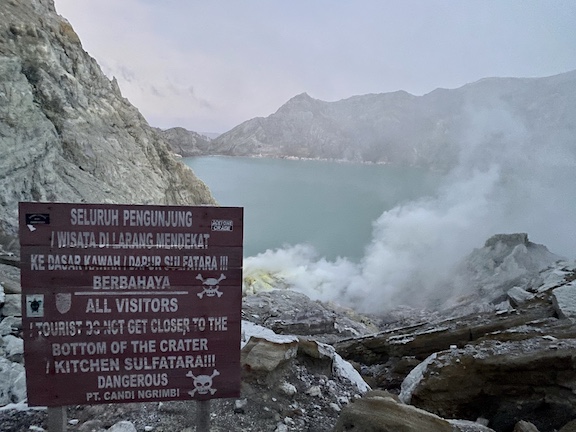
Again – I probably would have chosen NOT to do this part of the trek, but I’m so happy I got to do it kind of by accident. If there was a crowd (I read that there can be up to 300 people on this narrow trail on a given morning) it would have been crazily dangerous. Thanks to COVID, we had the experience with only some parts of the danger LOL.
When we got back to the top of the crater is was cold and windy. The sun was up, and I snapped a few photos.
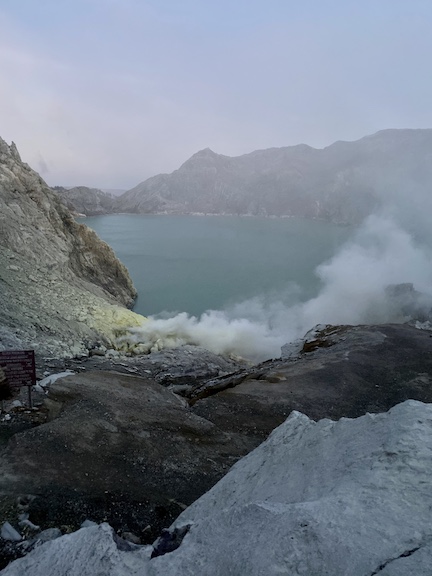

But honestly, I was really cold. And this was YET another time when I felt like taking in the view through my senses, not through my phone/ camera. There were quite a few people at the top of the crater by now and my back was a bit sore from bending down to tie my shoelace…
After freezing for a little while, we headed down to the bottom of the mountain; the hike down took about an hour, and again, it felt very steep but was not slippery, which made it quite easy. There were hundreds of Indonesians on their way up the trail as we were on our way down, but as far as I could tell we were the only foreigners on Mt. Ijen today. Indeed, it was a spectacular trip. HIGHLY recommended. This is one mountain I would definitely climb again.

